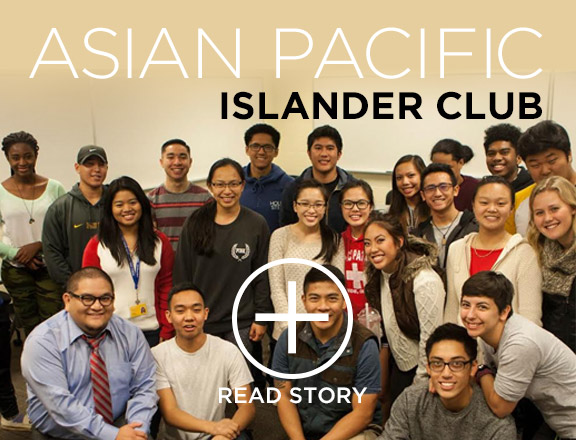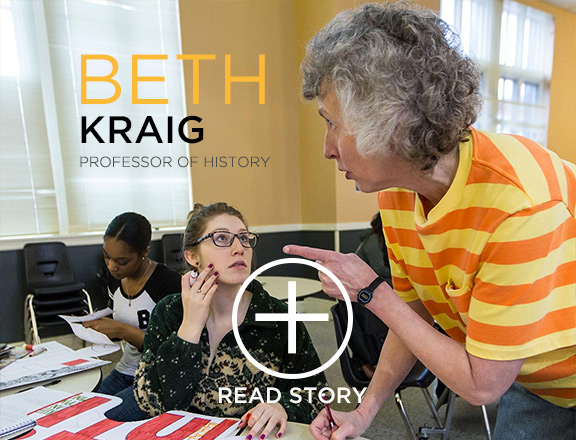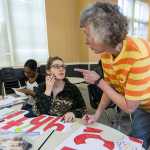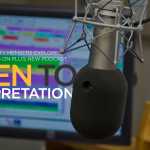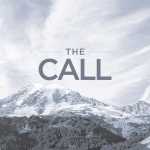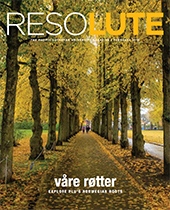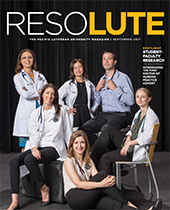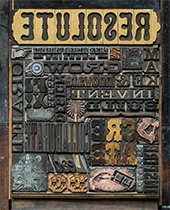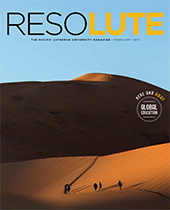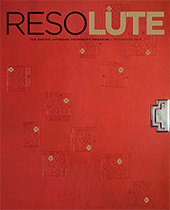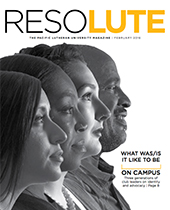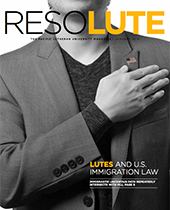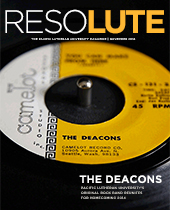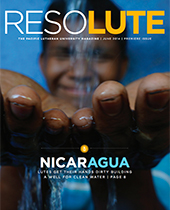- BRUCE DRIVER '78,
BANTU (Black Alliance Thru Unity) - CORNELIUS POPE '99,
B.L.A.C.K.@PLU (Black Leaders Actively Communicating Knowledge at PLU) - RODRESHIA DUNBAR '01
B.L.A.C.K.@PLU - KANISHA KEAL '10,
Black Student Union - IDAISHE ZHOU '11,
Black Student Union - SHELONDRA HARRIS '17,
Black Student Union
Cover Story
What was/is it like to be hidden on campus?
As Samuel Torvend, Ph.D., states in the opening note of this issue, “we know the power of an ancient and not-so-ancient story to change the way we view each other and this world. We know that the memory of freedom from stereotype, discrimination, and impoverishment holds the promise of hope.”
Universities are complex microcosms of a complex society. From the very beginnings of university life in the 11th Century, campuses have been places of change, diversity and disagreement. Indeed this tension has often been a driving force of the changes in higher education.
In this article, 18 great student leaders and alumni share how identity and activism has changed throughout the decades at PLU. With these questions and answers, we strive to connect narratives that mark changes in both our campus culture and the larger culture that surrounds us.
What Was/Is It Like To Be...Black
- BRUCE DRIVER ’78,
BANTU (Black Alliance Thru Unity) - CORNELIUS POPE ’99,
B.L.A.C.K.@PLU (Black Leaders Actively Communicating Knowledge at PLU) - RODRESHIA DUNBAR ’01
B.L.A.C.K.@PLU - KANISHA KEAL ’10,
Black Student Union - IDAISHE ZHOU ’11,
Black Student Union - SHELONDRA HARRIS ’17,
Black Student Union
What was/is the PLU climate?
Bruce Driver ’78: It was the ’70s, after Vietnam and the Civil Rights Movement. It felt mellow and kinda peaceful overall.
Cornelius Pope ’99: Although there wasn’t an air of exclusion, there was no conscious effort to be inclusive.
Idaishe Zhou ’11: When Obama was elected a few months into the school year, people were excited. It also started conversations about a post-racial period because if a black man could be elected president, that was evidence that race did not matter. Because of that, some people questioned why there was a need for a Black Student Union.
Shelondra Harris ’17: The PLU culture is exclusively inclusive. Being one of the few marginalized groups on campus, my experience as a black individual is not celebrated or appreciated by the university on an institutional level. This is evident by the lack of black faculty members, programs and courses on African-American studies and the overall student demographic makeup.
Why was/is the group needed?
Rodreshia Dunbar ’01: PLU had diversity but it was all over and spread out. It made it hard to get to know each other and it made it hard to find. B.L.A.C.K.@PLU was born out of the need to create community. This became PLU to me. It was my home away from home.
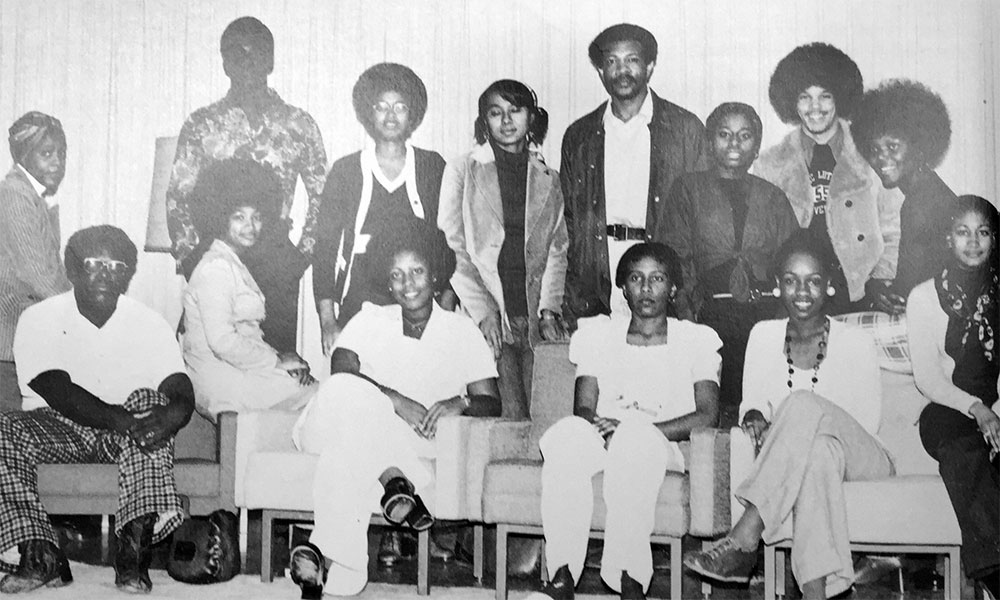
Kanisha Keal ’10: Although at the time the group started there was a significant increase in black students, the main reason I wanted to contribute and create the Black Student Union was because on campus you would encounter a lot of students who were white who doubted your merit. You were either an Achiever’s Scholar or the university was filling some sort of quota.
Shelondra Harris ’17: Black Student Union formed (again) in order to unite black students and other ethnicities through organization of events that emphasize the history, culture, existence and influence of such individuals. BSU is a space for my race.
What were/are some of the club’s challenges?
Bruce Driver ’78: Trying to have the meetings and consistently have people come to the meetings.
Rodreshia Dunbar ’01: I don’t think we had challenges in the beginning. There was so much excitement that there didn’t seem to be any. The challenge I saw was keeping the momentum going.
Kanisha Keal ’10: Some challenges we faced were people who didn’t feel there needed to be a BSU or encountering the usual, “If there was a White Student Union, it would be racist” argument. Again, people were in a post-racial fog.
Shelondra Harris ’17: A unique challenge is being responsible to take action in response to racial injustices. This is where the growth of allies, advocates and accomplices becomes significant.
What were/are some of the club’s victories?
Bruce Driver ’78: Working with the Minority Affairs Office, we were able to bring different speakers to campus a few times. I remember, for instance, that we brought Ruby Dee and Ossie Davis. I remember that she signed my yearbook. Occasionally, when I go back through there, I’ll see her autograph and little inscription.
Cornelius Pope ’99: To name a few, there were numerous abstract reading sessions, Women’s History, Black History, and Hispanic-American History events; special guest visits (we hosteda visit by Dr. Michael Eric Dyson, writer, academic and radio host); rallies and support of gay rights; support of efforts to defeat Initiative 200 (Legislation to repeal affirmative action); B.L.A.C.K.@ PLU sponsored and hosted a visit by the Rev. Jesse Jackson to the Tacoma area, which was a huge success.
Kanisha Keal ’10: Some victories included being able to hold a symposium that discussed politics, family and religion in the African-American community, hosting a viewing of the documentary Souls of Black Girls, both of which were attended by PLU students and the broader community.
Shelondra Harris ’17: Last year, Black Student Union was awarded Social Justice Program of the Year!
How did your PLU experience serve to prepare you for your life ahead?
Cornelius Pope ’99: Attending PLU was one of the greatest experiences in my life! Life lessons learned from my experiences at PLU have served to make me a better father, person and U.S. Army leader in that I feel I make a conscious effort to be aware of others and take into consideration others’ plight.
Rodreshia Dunbar ’01: B.L.A.C.K.@ PLU was my first leadership experience. It gave me confidence to do more. … It prepared me for my future.
Idaishe Zhou ’11: PLU taught me the importance of critical thinking and asking big questions in the midst of large issues that seem insurmountable. These skills have been invaluable when collaborating with others, especially people who have values and beliefs that vary from my own.
Kanisha Keal ’10: I’d say that BSU experience prepared me for the real world. You’ll encounter many different people with different views and learning to reconcile them in order to accomplish goals is important work. The group also helped me to discover my worth and what I have to offer to society in general. I’m not just a number filling some sort of quota and I’ll never be made to feel that way again.
Shelondra Harris ’17: My PLU experience is thickening my skin, preparing me for life ahead.
What Was/Is It Like To Be...Queer
- EVA FREY '95,
Stonewall / ASPLU Director of Diversity - BRIAN BANNON '97,
Harmony - CHRISTINE HILLER-CLARIDGE '07,
Harmony - LUCAS KULHANEK-ARENAS '14,
Queer Ally Student Union - ALEXANDRA CLAYTON '16,
Queer Ally Student Union
- EVA FREY ’95,
Stonewall / ASPLU Director of Diversity - BRIAN BANNON ’97,
Harmony - CHRISTINE HILLER-CLARIDGE ’07,
Harmony - LUCAS KULHANEK-ARENAS ’14,
Queer Ally Student Union - ALEXANDRA CLAYTON ’16,
Queer Ally Student Union
What was/is the PLU climate/culture?
Brian Bannon ‘97: To my knowledge, I think I was probably the first openly gay male student at PLU. Beth Kraig and Tom Campbell were the first openly gay faculty. It wasn’t a dangerous environment, but as a gay student you wouldn’t perceive PLU as a super embracing environment. I had a couple of guys who gave me a hard time and called me some pretty unsavory names on campus. One spat on me. There was an editor on the school paper who was producing a lot of anti-gay rhetoric. She was very anti-gay and wrote a lot about it.
Christine Hiller-Claridge ‘07: I transferred from a school where there was so much backlash to any attempt at gaining equality for the LGBTQA group. I knew there were people on the PLU campus who did not agree with same-sex relationships or gender expression, but it was never thrown in my face. I believe that did not happen because of how PLU encourages diversity and respectful understanding for differences. Progress was needed at PLU for Harmony, but it wasn’t going to come with a train waving a big old rainbow flag and demanding change or improvement. It came with conversation, visibility and respect for others.
Alex Clayton ‘16: PLU’s climate is primarily one of acceptance and diversity. I feel that students are more willing to put their opinions out there or fight for a cause, and due to the small nature of the school people are able to reach a large percentage of the student body fairly easily. PLU is always striving for a culture of care, and while there is always work to be done, I feel PLU is doing a great job so far.
Why did the organization form and why is the group needed?
Brian Bannon ‘97: Harmony wasn’t strictly for GLBT folks; it was for everyone interested in equality and issues of being a humane campus. I remember I would get these anonymous letters from kids who would struggle with their sexuality. They were looking for someone or a place to talk about it.
Christine Hiller-Claridge ‘07: Clubs and organizations are always needed. They provided a safe haven for those who were struggling. While society has progressed into being more accepting of diverse groups or minority populations, the individual may be struggling with an internal battle or horrible environment at home or the workplace.
Lucas Kulhanek-Arenas ‘14: During my second year and after I was elected co-commissioner, all of our members decided that we needed to rebrand Harmony. We needed to become more relevant within culture and to become more visible in the PLU community during a time of high LGBTQ suicide rates (It Gets Better Project), to be more inclusive of other non-conforming sexual and gender identities, and to lead the final push for marriage equality in the state of Washington.
Alex Clayton ‘16: PLU wasn’t always so LGBTQ friendly, and when the club started as Harmony in the ’90s there was a lot of work to be done. We have the wonderful Beth Kraig to thank for so much of the progress that has been made since then.
What are some of the club’s challenges?
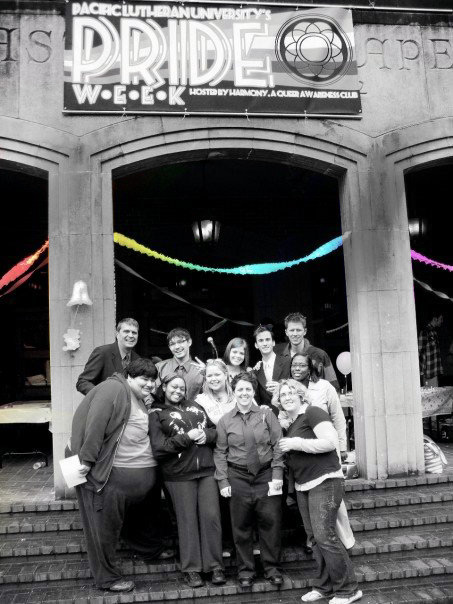
Christine Hiller-Claridge ‘07: I do not recall any significant challenges during my few years at PLU. I know we pushed the envelope by beginning Drag Shows, expanding programs that dealt with gender identity/expression and continuing brown bag discussions. With any club, attendance and membership are always areas to improve on. That was one of our goals: How do we get more people to get involved?! How do we get more people to participate in discussion?
Lucas Kulhanek-Arenas ‘14: Some of the challenges that emerged included a continuing difficulty to maintain a strong presence on campus.
Alex Clayton ’16: One of the great challenges is simply organizing people and getting them excited enough about the cause to meet once a week and attend events.
What are some of the club’s victories?
Eva Frey ‘95: PLU was an active partner with Hands Off Washington and the Tacoma chapter. PLU had a longstanding reputation in the Tacoma community related to race organizations, and through the initial efforts of Stonewall, PLU students extended that reputation to include issues of sexual orientation. And ultimately, Stonewall was merged into the student club, Harmony.
Christine Hiller-Claridge ‘07: Getting new programs up and running, like the Drag Show. Getting people excited about sexuality in a healthy manner. Doing Q&A’s to share individual stories of discrimination to educate people.
Alex Clayton ‘16: One of the club’s main victories is simply that it exists, honestly. I’m so amazed and so thankful that I live in a time when LGBTQ and ally groups are not only tolerated, but also encouraged.
How did your PLU experience serve to prepare you for your life ahead?
Eva Frey ‘95: PLU taught me how to think critically, and through courses in Core II, I learned theories related to civil rights, diversity and power/privilege. The by- product of my education was the ability to act with courage and care. As I serve as an educator committed to the philosophy that everyone can learn, unlearn, relearn—the ability to integrate the values of PLU’s mission into my meaning-making framework serves me each day.
Brian Bannon ‘97: The environment wasn’t hostile in terms of being unsafe but it was definitely an environment where students were expressing their anti-gay views. It was also real opportunity for students and faculty to begin grappling those questions as a campus. Because of people like Beth (Kraig) and Tom (Campbell) setting the tone, it made it more comfortable for other students to come out. I learned so much about leadership and voice.
Christine Hiller-Claridge ‘07: The most valuable lesson I learned at PLU and use every day and try to instill in my students is: You don’t have to agree with someone’s opinion/thoughts or respect their opinion, but you need to respect that they HAVE an opinion and can think for themselves.
Lucas Kulhanek-Arenas ‘14: Before going to PLU, being a gay Christian was a contradiction. After going to PLU, I learned that being gay and a Christian enriches the experience of both identities.
Alex Clayton ‘16: The best thing I ever learned at PLU is that I don’t have to pretend to be someone I’m not to get people to like and listen to me.
Featured Benchmarks of Change for LGBTQ Community at PLU
Community Outreach
The PLU dCenter partners annually with Oasis Youth Center in Tacoma to put on Queer Prom for LGBTQ and allied youth from ages 14 to 24. In spring 2015, PLU hosted more than 300 youths from surrounding high schools.
Co-Curricular
In 2014, PLU Athletics won the first ever Division III Inclusion Award for their advocacy for LGBTQ athletes.
Community Outreach
Also in 2014, PLU launched an outdoor campaign on more than 100 billboards called 'My Language, My Choice' that addressed the use of hurtful and harmful language and the impact our words may have on others. Words highlighted in the campaign: "That's so gay," "no homo," "exotic," "illegal," "man hater," "ghetto," "retarded and "what are you?"
Co-Curricular
The Residential Hall Association’s annual Gender Exploration Week invites all students to explore the concepts of gender, sexuality and the intersectionalities with race, class, ability, etc.
Co-Curricular
In 2012, Residential Life changed policy to include gender-neutral housing. Single rooms and gender-neutral rooms are an available an option on wings for students for whom biological sex does not match their gender identity.
Academics
Some absolutely stellar curricular offerings. Multiple students have said their lives were changed by the transgender literature class taught by Jennifer Smith, Ph.D.
Co-Curricular
Many different programs and hosted discussions from the PLU Diversity Center, including the formation of PLU’s Diversity Alumni Network.
Co-Curricular
In 2014, University Congregation became an official Reconciling in Christ church, welcoming the LGBTQ community into its student congregation. Reconciling in Christ (RIC) is a program for Lutheran communities that publicly welcome people of all sexual orientations and gender identities.
PLU Community
PLU's Human Resources has a history of working with and being an advocate for LGBTQ staff members for domestic partnerships, marriage equality, transgender health care, etc.
What Was/Is It Like To Be...Latin@
- EMILY DAVIDSON '98,
Puentes - XOCHILT COCA '13,
Latin@s Unidos
- EMILY DAVIDSON ’98,
Puentes - XOCHILT COCA ’13,
Latin@s Unidos
What was the PLU climate at the time?
Emily Davidson ‘98: I would need to do some digging into the archives, but I think students of color were 5 percent to 8 percent of the student body at the time, maybe less. Across the nation, it was the era of “multiculturalism” and “sensitivity trainings,” but it felt like a lot of people at PLU hadn’t received the memo. At the Multiethnic Resource Center, where I worked as the “Hispanic” Peer Advisor (we were just starting to use the term “Latino/a”), I remember vividly that the list of students who identified as “Hispanic” or “Spanish” fit onto one page. I have very fond memories of hanging out at the Multiethnic Resource Center. The students that went there were a very small, tight-knit group of students of color and a few allies, who depended heavily on the guidance, mentoring and course offerings of faculty leaders like Tamara Williams, Arturo Biblarz, Beth Kraig, Tom Campbell, Lisa Marcus and John Moritsugu. These faculty members were tireless advocates for diversity and change at PLU.
Xochilt Coca ‘13: At the time Isamar Henriquez ’13 and I stepped onto the PLU campus, there was no student organization that represented our Latina identities. In fact there had not been a Latin@ student organization on campus in almost eight years.
Why did the organization form/why was the group needed?
Emily Davidson ‘98: A couple of amazing students in the Spanish program, Anne Marie Sorenson and Mary Abraham (may she rest in power!), were really interested in starting a Spanish language club. I was interested in starting a Latino/a student organization that was more inclusive than a traditional M.E.Ch.A. club (Movimiento Estudiantil Chicano de Aztlán). A new profesora, Tamara Williams (yay for junior faculty enthusiasm!), introduced the three of us and Puentes, which means “bridges” in Spanish, was born. Puentes was the combination of a Spanish language club and a Latino/a student organization—a well-intentioned collaboration with many pros and cons.
What were some of the club’s challenges?
Emily Davidson ‘98: Where do I begin? First off—hello?! Not all Latinos speak Spanish! Whoops. The pressure was on for those of us who felt inadequate about our skills in our heritage language. Imagine: you’re a non-Spanish-speaking Latino/a, and a well-intentioned non-Latino/a classmate, with mad Spanish skills, wants to chat it up with you. You feel ashamed. Second, the dominant paradigm on the West Coast for Latino/a student organizations at the time was M.E.Ch.A. Not all of them, but at the time, many of these groups were very machista, homophobic and not open to non- Chicano/as and non-Spanish-speaking Latino/as. We struggled to be inclusive of a wide array of Latino/a identities, a model rejected by our own communities when we went to statewide conferences. Finally, the interests of the Spanish club model did not always align with the needs of Latino/a students in the group, who were dealing with racism or feelings of invisibility on campus, identity-development issues, and the larger political struggles of the era.
Xochilt Coca ‘13: Some of the challenges we faced as an organization included learning the fine line between performing as a means to promote and celebrate the cultures of Latin@s and being tokenized for entertainment purposes. Although we enjoyed performing for the PLU community for various events we also experienced moments where we felt like were being used as tokens to show how “diverse” the campus was to PLU families. That was emotionally painful. It made us feel like our performances wouldn’t be taken for their cultural importance for us, but for how exciting or how fun it was to watch.
What were some of the club’s victories?
Emily Davidson ‘98: There were many small victories—awesome lectures and guest speakers, a huge Salsa party with a live orchestra, Spanish conversation tables—but I think our greatest victory was when we created an alliance with other clubs on campus: The Diversity Coalition. This was an early attempt at intersectional solidarity at a time when “multiculturalism” was not fully embracing our LGBT community. We got into many heated and necessary arguments. We were unapologetically in-your-face. I’ll never forget our first Diversity Week when we hoisted gay pride flags all over campus! It was so cool.
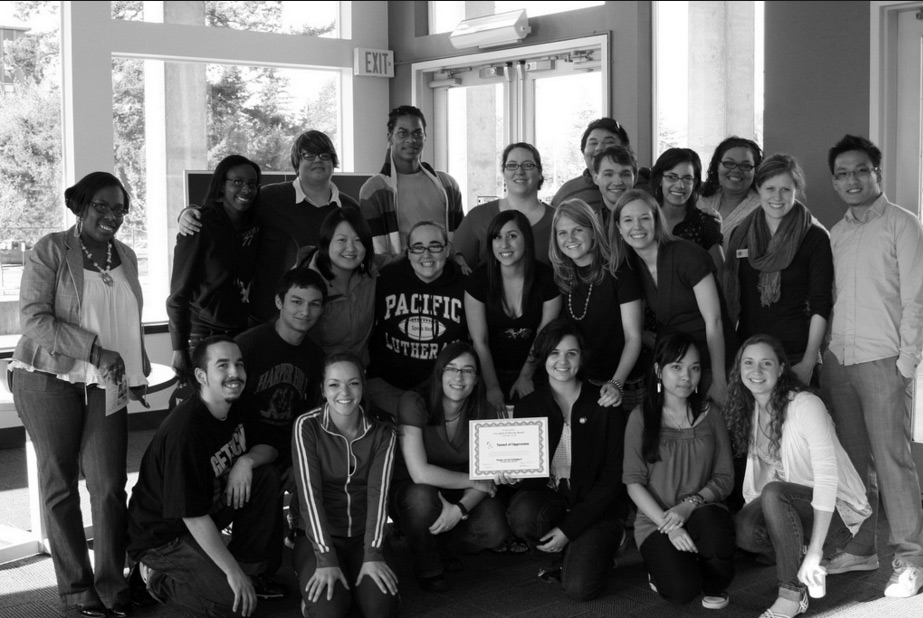
Xochilt Coca ‘13: Even with the challenges we faced to dismiss stereotypes and fight to be recognized as leaders on campus, we had great successes. By our senior year Latinos Unidos had grown to 20 strong members who not only felt like family but were also a team of extraordinary student leaders committed to issues of social justice and advocacy. We attended the May Day Pro-Immigration march in Seattle, made connections with off campus organizations, created the annual event Rumba to celebrate the many cultures of Latin@s, and were a well-known student organization.
How did your PLU experience serve to prepare you for your life ahead?
Emily Davidson ‘98: At PLU, I started to discover who I was as a light-skinned, multiracial, sort-of-bilingual Latina. Tamara Williams’ Latino Experiences course introduced me to Chicano/Latino/a literatures, igniting a fire inside me that continues to burn. In a tough- love conversation with Lisa Marcus, I remember her telling me that if we—he students—wanted to see more people of color in higher education, we would just have to become professors. Here I am.
Xochilt Coca ‘13: I am extremely proud to say I was a part of Latinos Unidos. I formed lifetime bonds with friends I made within the organization and they have become a part of my family. The experiences and leadership skills I gained during my time at PLU prepared me to “bring it” in my life ahead.

